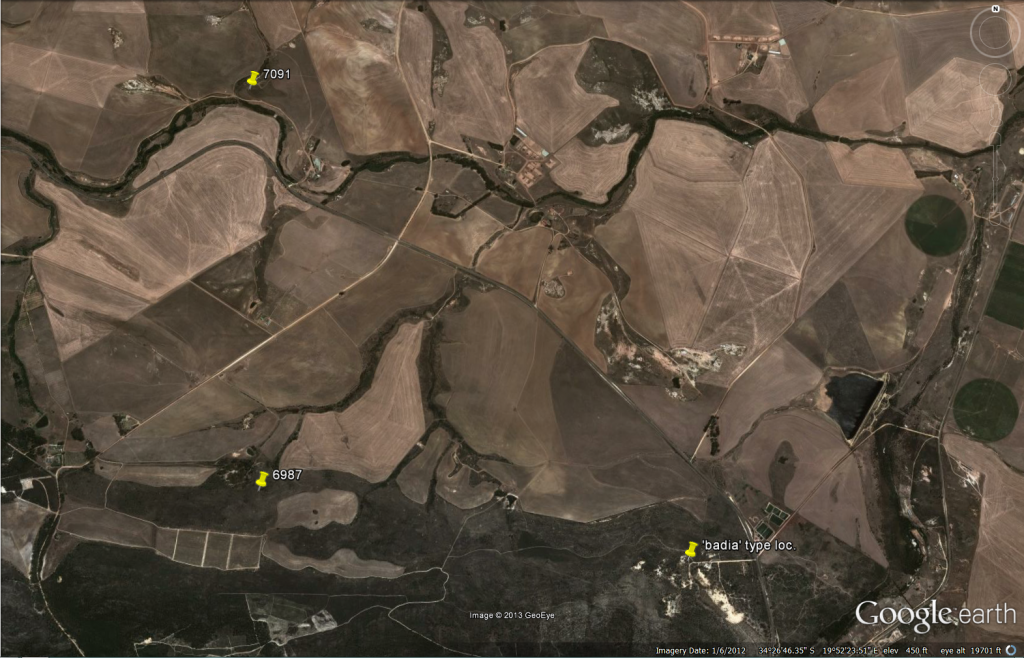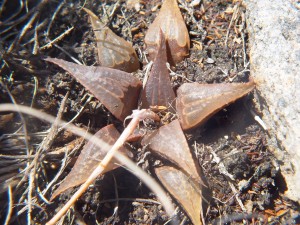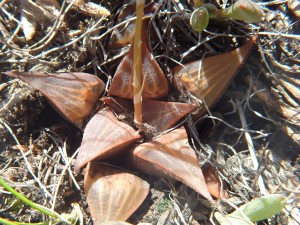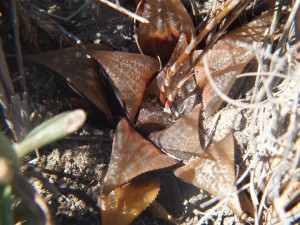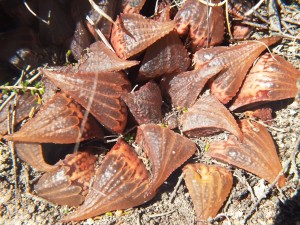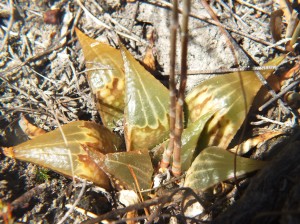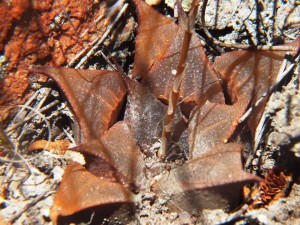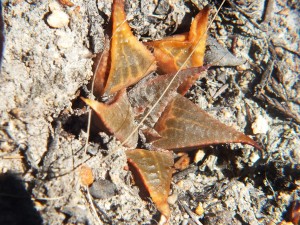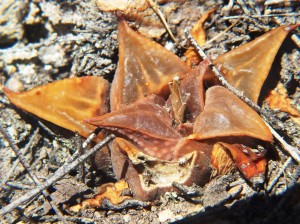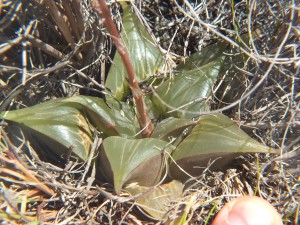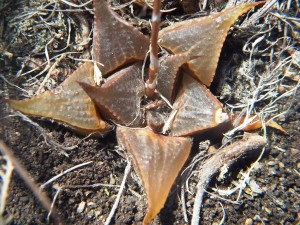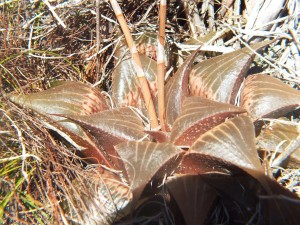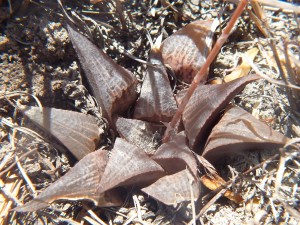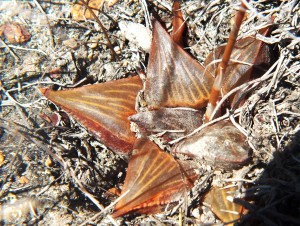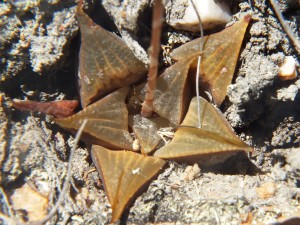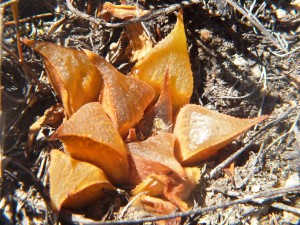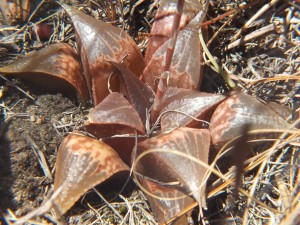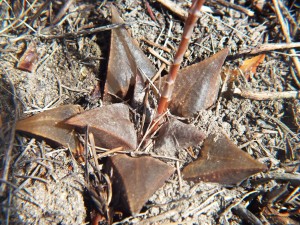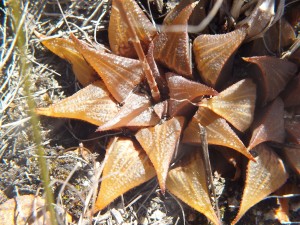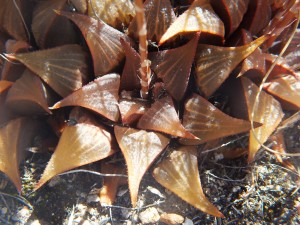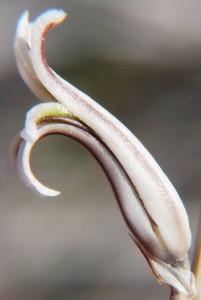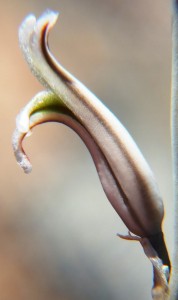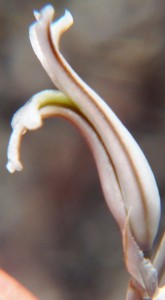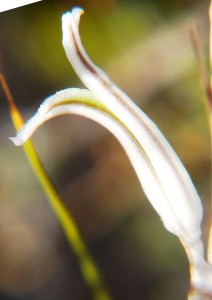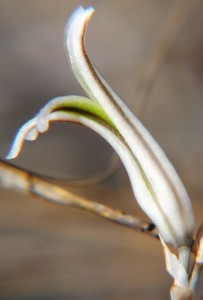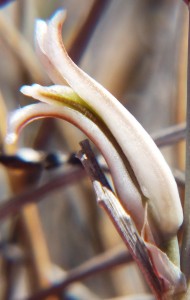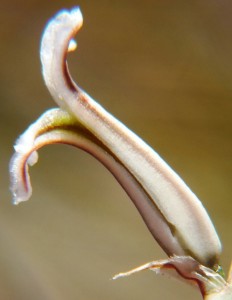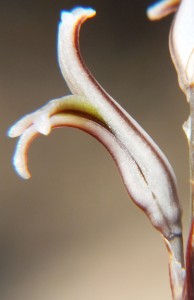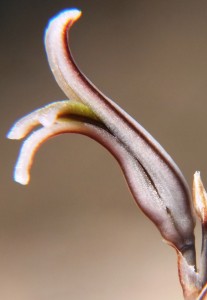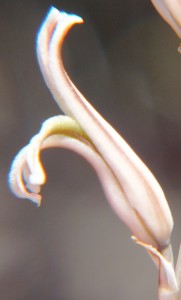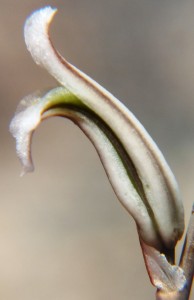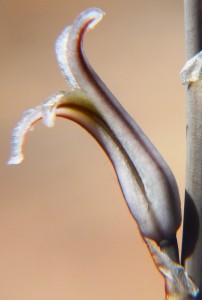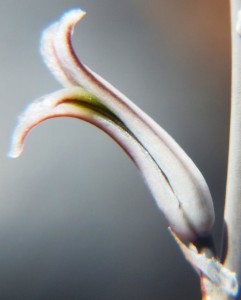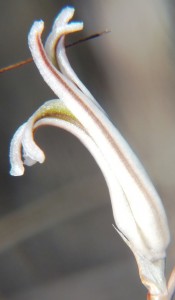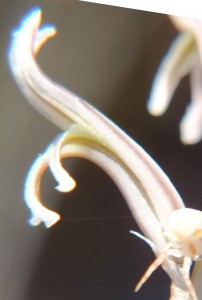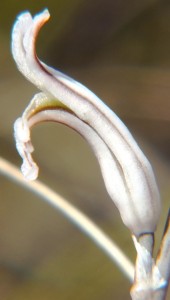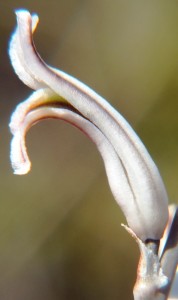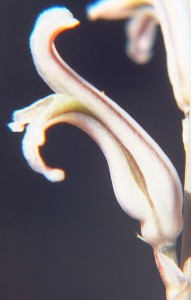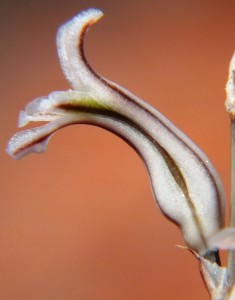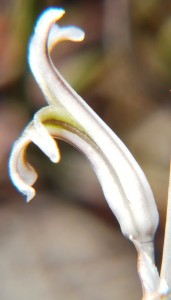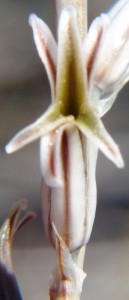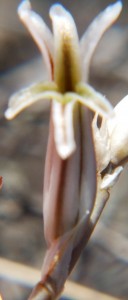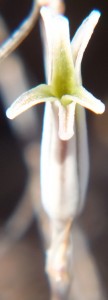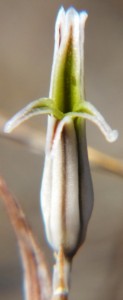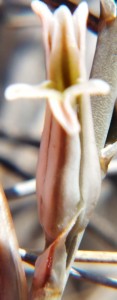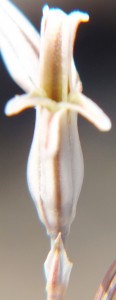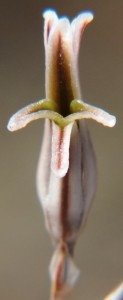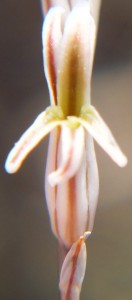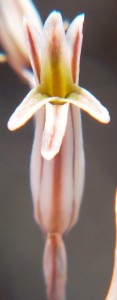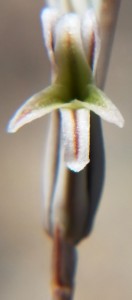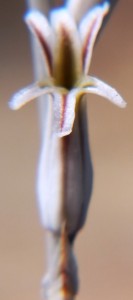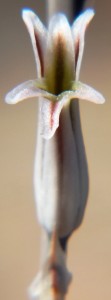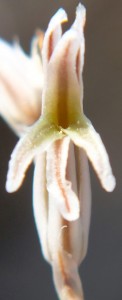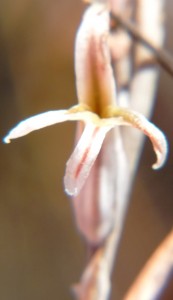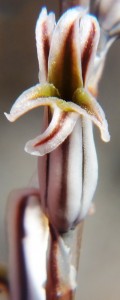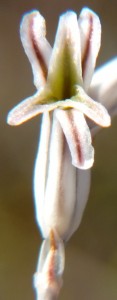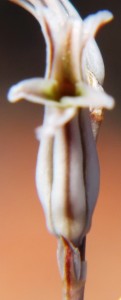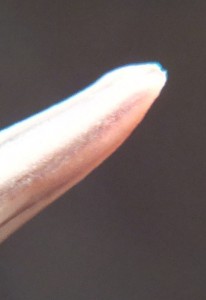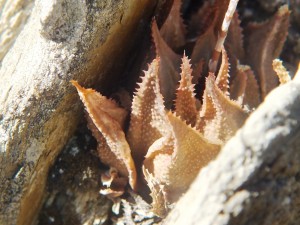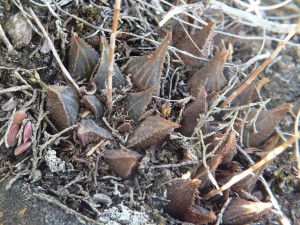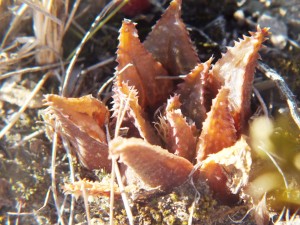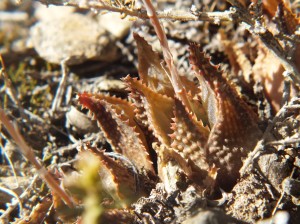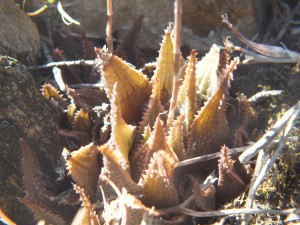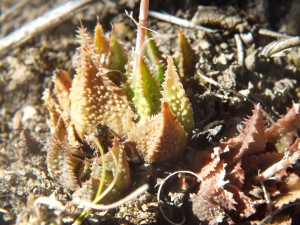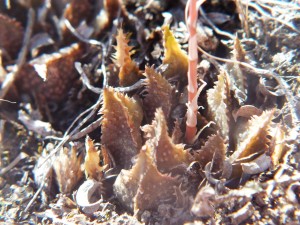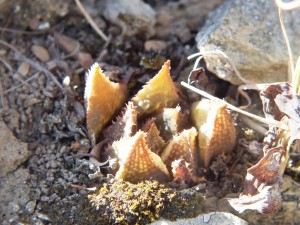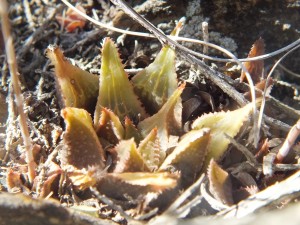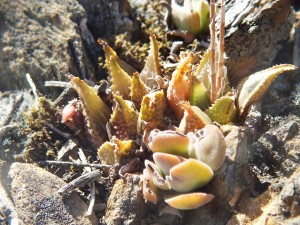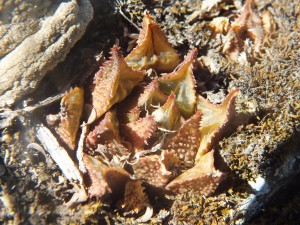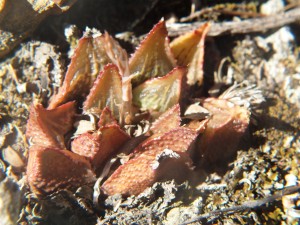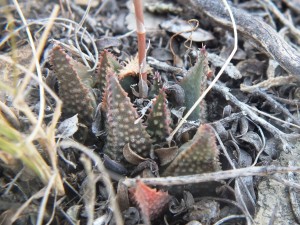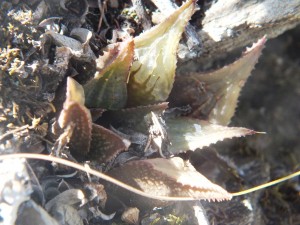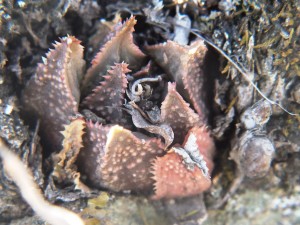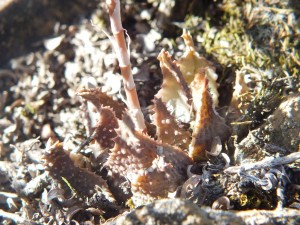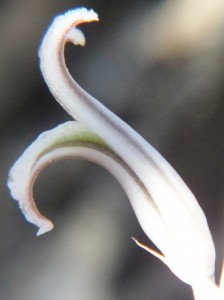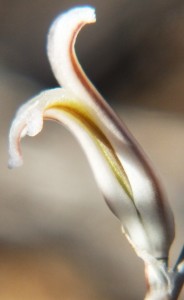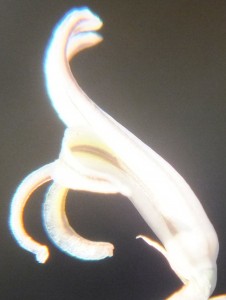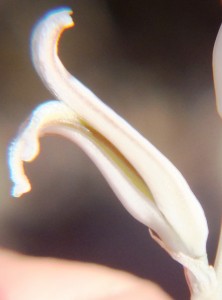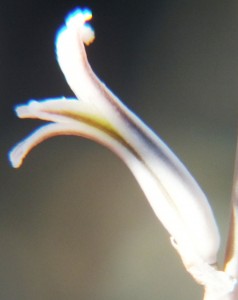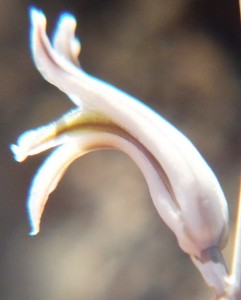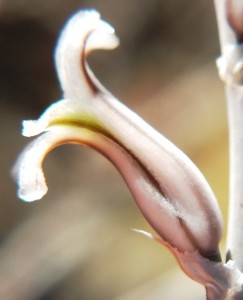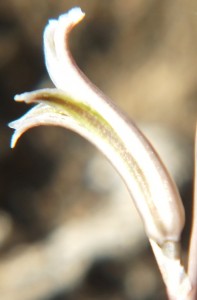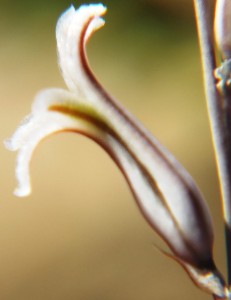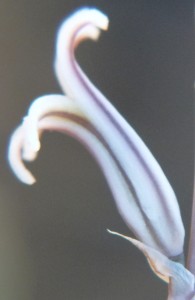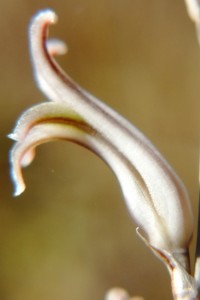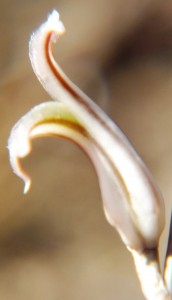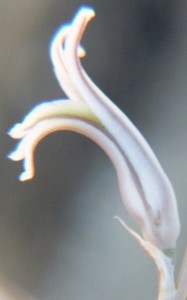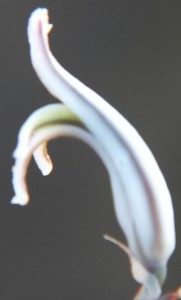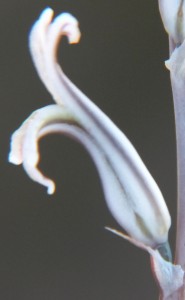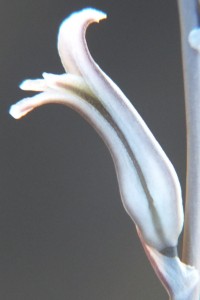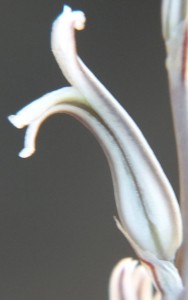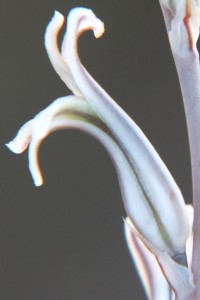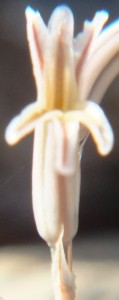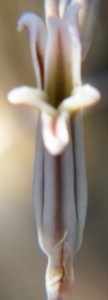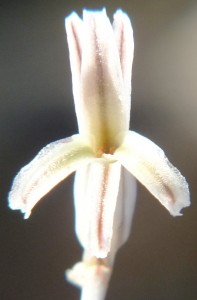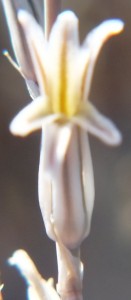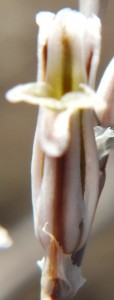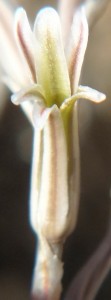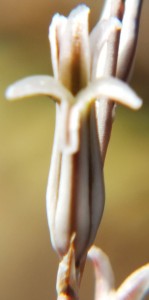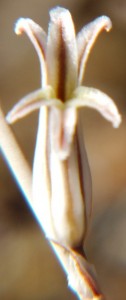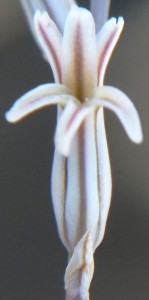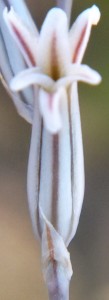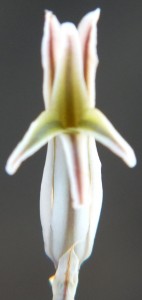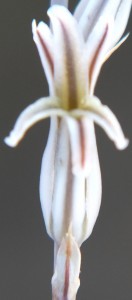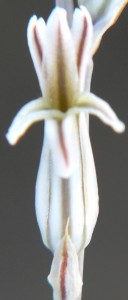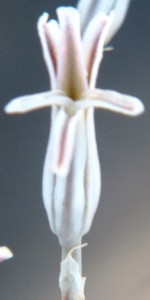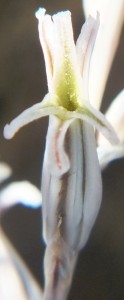Appendix 8 to Vol. 8 Haworthia Update. A report on Haworthia mirabilis ‘badia’ / ‘subtuberculata’
I cannot claim that I have resolved the nomenclature niceties around the use of this name and its many varietal names and synonyms. If critically examined even the use of the name “mirabilis” is in doubt and the very original epithet of “Aloe atrovirens” may be nomenclaturally correct. This would create havoc because then the name H. herbacea as typified by W.T. Stearn may best apply. So I put that all aside and use names as I have in my Revision and subsequent publications. I am well aware that there is a problem with the use of H. mirabilis var mirabilis where it may be thought that the name “mundula” is therefore redundant. I cover all this up with the explanation that there is no typical variety “mirabilis” and actually use just the name H. mirabilis to cover all those populations and variants to which no Latin names exist. I use names like “badia” and “sublineata” as it is generally possible to recognise all or most of the variants from those populations. But names like “magnifica”, “maraisii”, “heidelbergensis”, “rubrodentata”, “beukmannii” and “depauperata” (among others) have no clear and direct application in respect of a population or even a group of variants of any kind. In my Revision I attempt the use of the name “triebneriana” to cover all the variants that are not included under the typical varietal name “mirabilis”. This does not actually work either because the name has its origins at Stormsvlei and there are other populations that are very different from those occurring there too.
My conclusion was, and is, that it is not possible to formally name and describe all the variants in H. mirabilis. Firstly this is true at population level and very much more so in respect of the incredible variation that exists within those populations.
In this appendix I present images of plants and flowers for just two populations…
MBB6987 Haworthia mirabilis ‘badia’. Sandfontein.
MBB7091 H. mirabilis ‘subtuberculata’. Mierkraal, Napier
(Note: – this is not MBB6631 Bredasdorp ‘Mierkraal’ where ‘mundula’. I use now the name ‘subtuberculata’ as one of two generally for that area Northwest of Napier. These are plants with generally erect to suberect leaves, fairly strongly triangulate and tubercled. The VonPoellnitz and Triebner names ‘multituberculata’, ‘napierensis’ and ‘turgida’ are also available).
1. MBB6987 Haworthia mirabilis ‘badia’. Sandfontein.
2. MBB7091 H. mirabilis ‘subtuberculata’. Mierkraal, Napier
The first population is approximately 2.8km west of the “typical badia” population and in almost the same geological stratum and habitat viz. Table Mountain Sandstone with grassy fynbos. The second population is approximately 2.7km northwest of the first and it is on a small ridge of vertically orientated Bokkeveld shale with Renosterveld. There are several populations west and north from here with similar plants. To the east at Napier and north of Napier the plants vary towards smaller and darker versions of H. mirabilis that very loosely indeed have been covered by the name “maraisii”. This is a complete myth and about as accurate as the use of the name “magnifica” to cover all the H. mirabilis variants around Heidelberg and Riversdale. It must be noted that the name “heidelbergensis” is drawn into the arena too and in Appendix 9 I will explain one aspect of the situation with respect to that name.
What this particular report is intended to convey, is the dramatic change related to firstly location, and secondly habitat. I maintain that there is no prescribed species definition in botany and that this is the prime reason for the confusion that exists at every level in botany. Therefore I have arrived at my own view of species as dynamic systems that are not necessarily recognisable in terms of tangible visible characters. There are two important considerations in the way I classify Haworthia. The first is there geographic spatial positions, and secondly the way in which apparent systems relate to each other with respect to those positions. Therefore what I am showing here is that H. mirabilis “badia” is the sandstone version (ecotype) of the species northwest of Napier, and H. mirabilis “subtuberculata” the shale version a little to the north and then west. H. mirabilis “sublineata” is a sandstone ecotype south of Bredasdorp and H. mirabilis “mundula” a fairly unique population on tertiary gravel southwest of Bredasdorp. In Appendix 9 I will give an inkling of what happens to H. mirabilis in the shale and tertiary formations north and then west from Napier.
Acknowledgement.
Mr Wynand Wessels kindly accompanied us to the population at Mierkraal. It was difficult to establish just who owns the property at Sandfontein where H. mirabilis occurs an while we met two landowners in the area we were not sure if we were trespassing or not.

